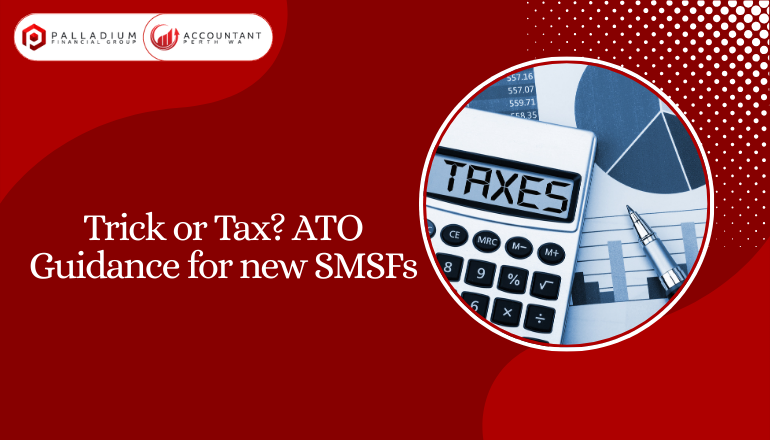
The process of establishing a Self-Managed Super Fund (SMSF) can be empowering in the process of achieving financial independence. New trustees soon, however, learn that the Australian Taxation Office (ATO) is central to maintaining strict compliance boundaries in the operation of these funds. The tax rules for new SMSFs present a narrow path between opportunity and responsibility that trustees must walk on. It is important to understand how to deal with new SMSF tax regulations to get your fund started and to avoid punishment.
This blog discusses the basics of ATO compliance in the new SMSF, outlining the SMSF trustee responsibilities, the traps to avoid, and how to manage the responsibilities.
A self-managed super fund (SMSF) is a type of superannuation fund that is managed individually, as opposed to using a retail or industry super fund. SMSFs provide trustees with the power to make investment decisions on retirement savings, unlike in traditional funds, where fund managers make such decisions.
Yet, this independence is accompanied by a lot of responsibility. SMSFs and their operation are subject to a stringent legal framework as defined by the Superannuation Industry (Supervision) Act (SIS Act) and Income Tax Assessment Act. The rules established by the ATO establish who is eligible to be a trustee in the SMSF establishment, what they can invest in and how the funds should be reported.
Although trustees enjoy more control, they also have to deal with compliance, file proper SMSF tax returns ATO, and see to it that the activities of the fund are in line with its sole purpose, that is, to provide retirement benefits.
The ATO is the regulator of SMSFs, and its guidance acts as a guide for trustees to be able to manage their responsibilities successfully. To new trustees, the ATO guidance for super funds should be well understood so the fund is not labelled as non-compliant.
The ATO has strict guidelines on fund registration, investment methods, contribution limits, and reporting. Special attention must be given to the SMSF annual return procedure. Careless mistakes during the first year of existence can bring undesired attention and negate the fund’s compliance status.
Furthermore, the ATO frequently modifies its expectations and areas of compliance priority. New SMSF trustees need to remain up-to-date in order to avoid making expensive errors. Through strict adherence to ATO advice, trustees can make better-informed decisions, minimise risks, and simplify the administration of SMSF returns.
Setting up an SMSF is more than opening a bank account and preparing a trust deed. The trustees have a lengthy list of compliance requirements, some of which are:
These compliance obligations demonstrate how complicated operating an SMSF can be. For most trustees, using a tax return Perth expert can make things easier and help eliminate misreporting risks.
In spite of the well-intention, most new trustees make mistakes with the management of their funds. Possibly the most common pitfalls are:
These errors do not just compromise compliance, but they also cause the inability of the fund to provide the best retirement savings. These problems can be avoided when SMSF trustees are proactively managed and their duties are strictly followed.
ATO is not just a tax collector but a regulator, educator and enforcer of SMSFs. Its main position is to make sure that funds are operated in the best interests of members, as well as being within the superannuation laws.
The ATO tracks the conduct of trustees by:
Moreover, the ATO expects trustees to proactively manage ATO Communications, meaning that all communication, such as notices and assessments, is processed correctly in a timely manner. Refusal to or postponement of communication may have dire consequences, such as the fund being declared non-compliant.
To prevent making their SMSF experience into a tax trap, the trustees need to implement proactive measures to ensure compliance throughout the year:
Implementation of these best practices ensures the fund runs smoothly and minimises the likelihood of an ATO inquiry.
Operating an SMSF entails regular responsibilities that overwhelm many new trustees. Professional SMSF services provide know-how in compliance, reporting, and administration, ensuring the fund complies with all the requirements without undue stress.
Some of the ways professionals provide value are:
With the outsourcing of intricate tasks, trustees are able to target their retirement aspirations without worrying about the self managed super fund tax return process.
The choice of creating an SMSF can be gratifying, and it provides flexibility and control of the retirement investments. Nevertheless, the compliance is not negotiable due to the oversight of the ATO. To new trustees, to be successful, it is important to learn the SMSF establishment rules and the SMSF annual return process and to stay abreast of SMSF trustee liability.
Errors early on can lead to long-lasting repercussions, necessitating compliance measures. Staying informed, practising good governance, and seeking professional guidance will help trustees meet their duties and maintain legal compliance. Proper management of regulations will determine whether an SMSF serves as a financial asset or a tax strategy.